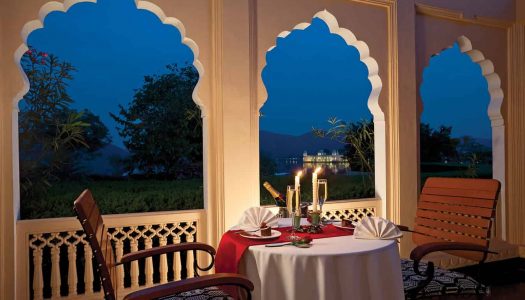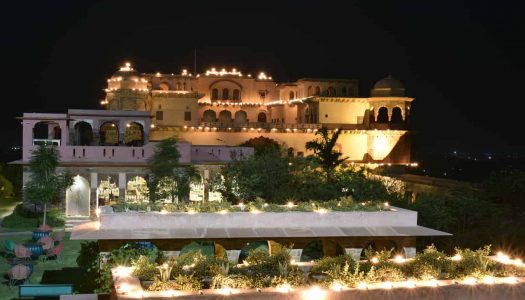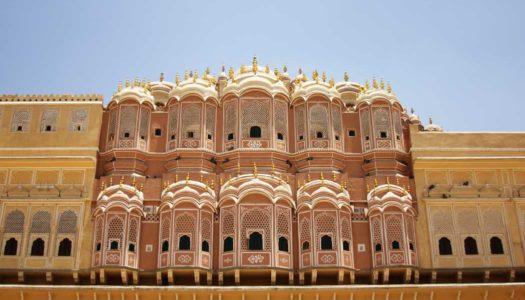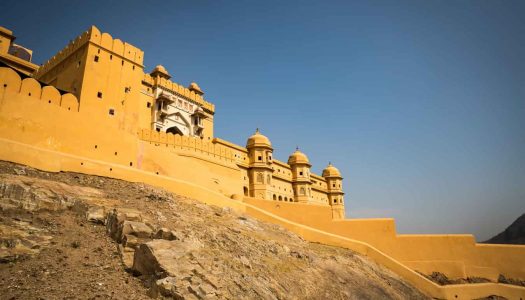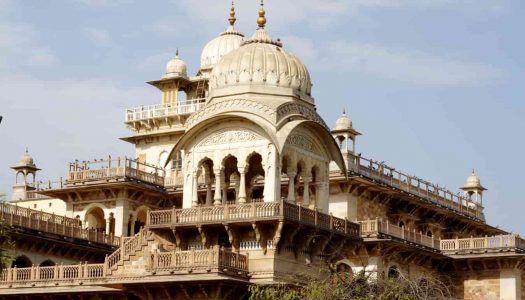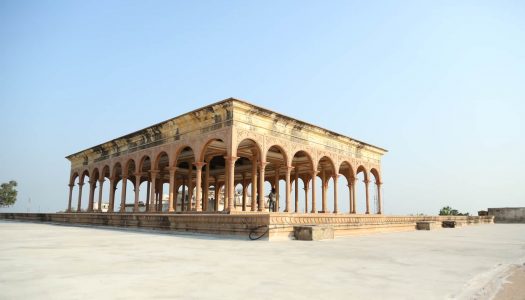Nahargarh Fort was one of the most significant structures in Indian history, especially during the Rajputana ruling era. It served as one of the main fortifications that protected our fertile lands from the prying eyes of the invaders. Surprisingly, the fort was also a recreational getaway for the royals.
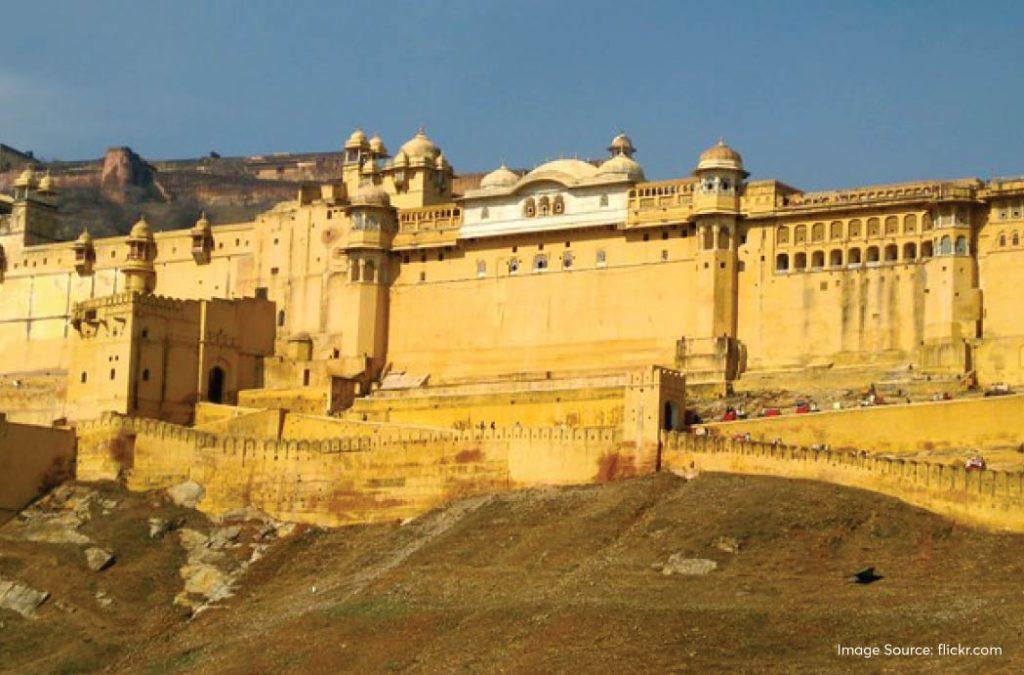
Standing proudly on the rugged terrain of the Aravalli range, Nahargarh Fort offers captivating views of the sprawling pink city, bustling city markets and also other tourist attractions in Jaipur. Along with its historical prominence, travellers can also witness its architectural prowess, one of its kind with intricate carvings on the walls and courtyards.
Here’s everything you need to know about Nahargarh Fort’s history, architecture, visiting hours, entry fee and things to do around the place along with some lesser-known facts about the leading monument.
The history of Nahargarh Fort in Jaipur
Maharaja Sawai Jai Singh II laid down the initial foundation of building Nahargarh Fort in 1734. Though the construction started at an impressive pace, several obstacles made it challenging to complete the task. It is said that the ghost of Rathore Prince, Nahar Singh Bhomia, obstructed the construction of the fort and the king ordered his men to build a temple of the late prince to commemorate him. You will find it within the walls of the fortification.
The fort was initially named ‘Sudershangarh’ but was later renamed to ‘Nahargarh’ to commemorate Prince Nahar Singh Bhomia. ‘Nahargarh’ also means ‘abode of tigers’.
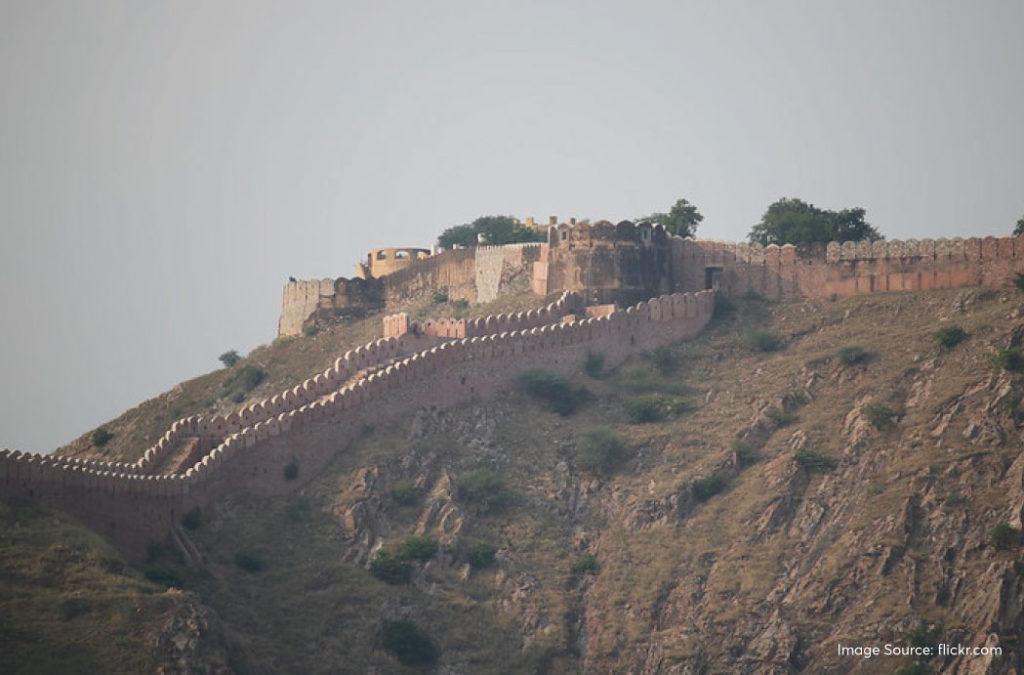
The Nahargarh Fort was initially intended to be the royal retreat and that is why a summit that overlooks the city was chosen as an apt location to build it. Later, along with Amer and Jaigarh forts, it played a very important role in keeping the boundaries of Jaipur safe from foreign invaders. However, the fort has faced no attacks to date.
Does that mean nothing of paramount importance happened here? Wrong.
In the 18th century, the truce between the Rajputana kings and Marathi warriors was signed here. Also, during the Indian Independence struggle in 1857, the then-Jaipur king relocated the Europeans who were living in the region to the safety of the fort to protect them from crowd altercations.
In 1868, Raja Sawai Ram Singh made several changes to the fort. In 1883, the rulers began adding more palaces to the fort – royal residences for the men and women of the regal families. Even during those days, it took about INR 3,50,000 to build these palaces. Currently, the place is under the jurisdiction of the government of Rajasthan. Until 1944, the Jaipur government used to fire a gunshot from the top of the fort, a signal to let the residents of the city know the time.
The architectural allure of Nahargarh Fort
Nahargarh Fort undoubtedly is one of the best architectural marvels in the country. It is built in the Indo-European style and has intricate carvings and motifs on its walls. The entrance is adorned by the gorgeous Tadigate. Inside, there are two temples. As mentioned earlier, one is dedicated to Prince Nahar Singh Bomia while the other one is for the Rajputana rulers. The fort is present at a height of 700 feet above the city level and its walls extend for several kilometers within the Nahargarh Biological Park in the Aravalli hills.
The most beautiful part of Nahargarh Fort is the Madhavendra Palace, built by Sawai Madho Singh. It is a two-storied royal residence that has separate chambers for the king and the queens. You will find 9 different queenly chambers, all built in the same pattern with ample space allocated for a lobby, kitchen, bedroom and living area. The corridors connect the queens’ living chambers with that of the King’s. What’s fascinating? The architectural plan is in such a way that the king can visit any one of his queens without the others knowing.
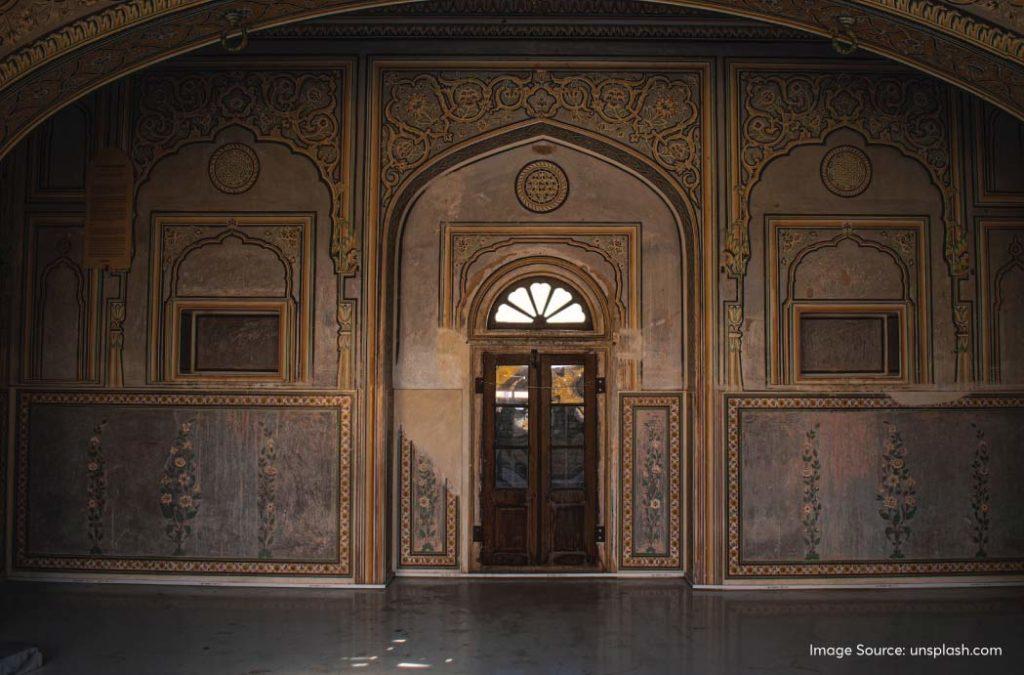
Next, you can explore the Diwan-i-Aam, a gathering space where the king addressed his followers, administrative heads and subjects. This was also the space where recreational activities and cultural performances happened during the royal era.
There are two stepwells in and near Nahargarh Fort that were built with a zig-zag pattern without disturbing the natural terrain of the Aravalli mountains. While one of them lies inside the walls of the fort, the other one rests outside.
Main attractions and activities near the Nahargarh Fort
Jaipur Wax Museum
The Jaipur Wax Museum was inaugurated within Nahargarh Fort in December 2016 by Bollywood actor, Govinda. This space holds the finest wax statues of famous personalities from different fields like movies, politics, sports, social activists, sports and entertainment.
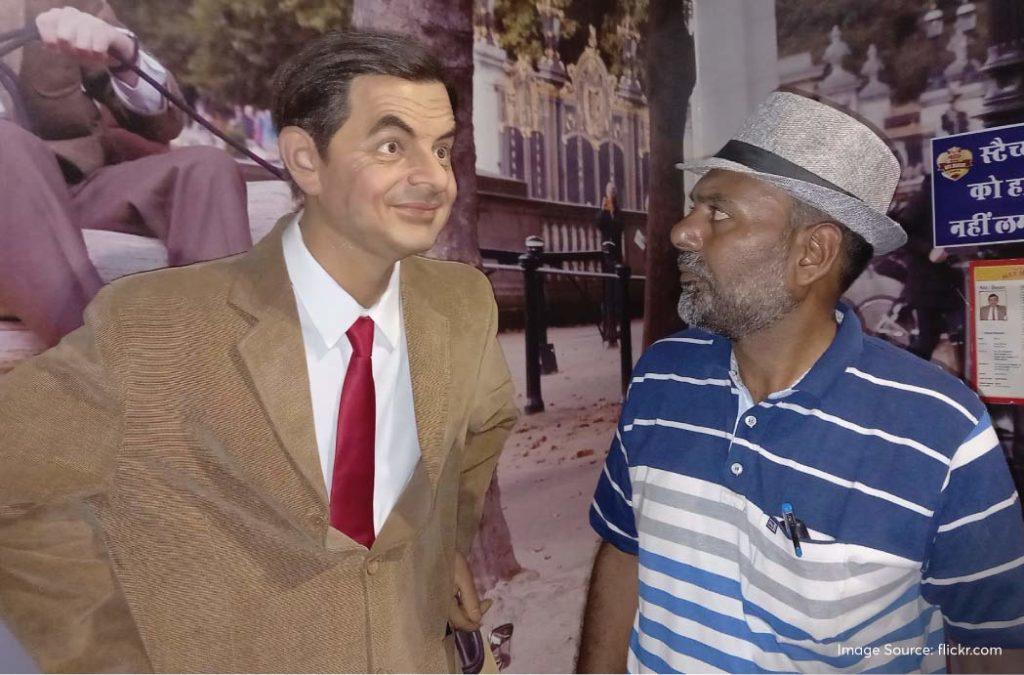
You will see the statues of Bollywood celebrities like Amitabh Bachchan, Shah Rukh Khan and Deepika Padukone among others. There are statues of international favourites like Mr. Bean and Harry Potter too!
Sheesh Mahal
The Sheesh Mahal is a visual spectacle with its large chandeliers, impressive carvings, detailed designs and mirrors that come in all sizes and colours. Sapphire blue, emerald green, ruby red – you will find mirrors of all colours that beautifully adorn the place.
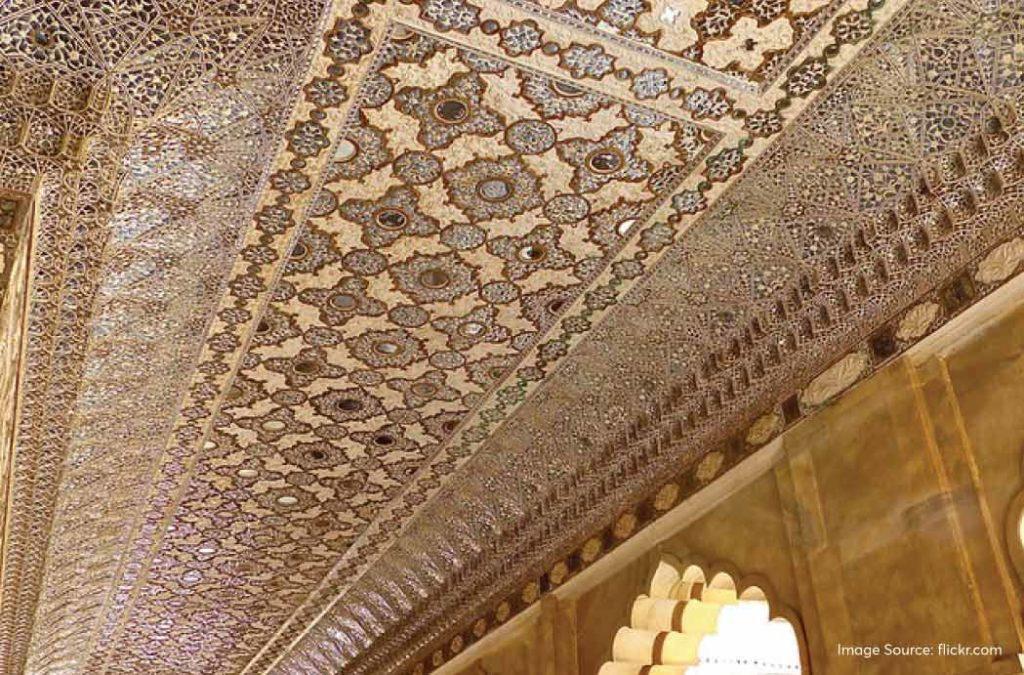
It is a great spot to click some really good royal pictures within the fort. There is no separate entry fee to visit Sheesh Mahal. It is included in the price that you pay to enter Nahargarh fort.
If you are a fan of palaces, you will enjoy paying a visit to Hawa Mahal or the Palace of Winds. Do check it out after you explore Nahargarh Fort.
Sculpture Park
The sculpture park in Nahargarh Fort is a joint venture between the public and private sectors of art. Here, you can attend the annual sculpture gallery where you can see the artwork of several renowned artists from the country.
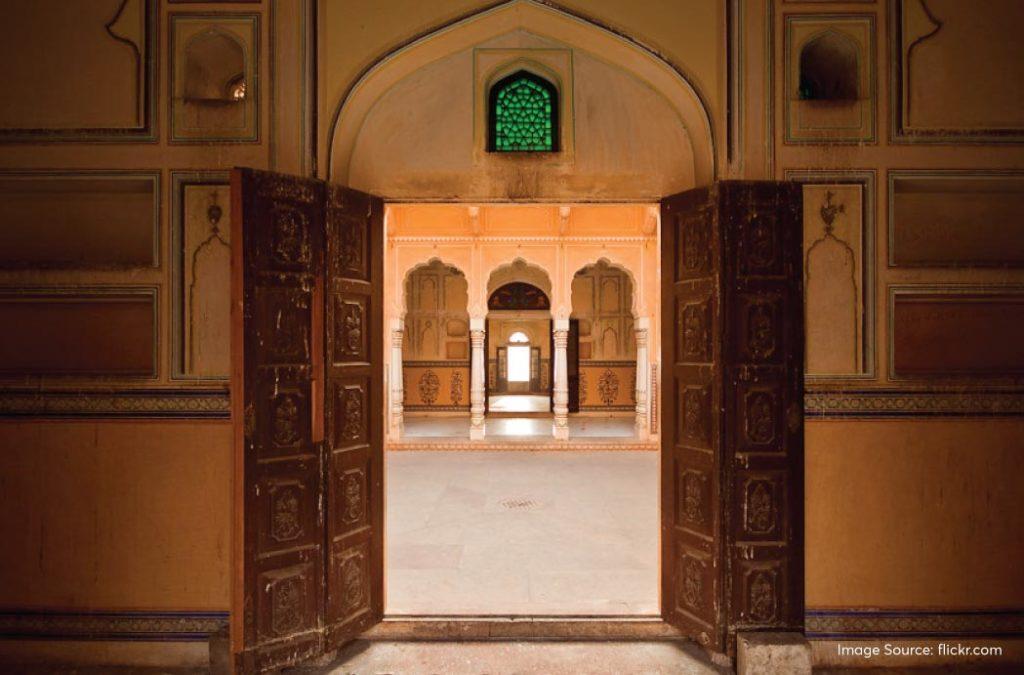
The last gallery event, the third edition, was held in February of 2023. The Sculpture Park has art pieces made from metal, stone, wood and mixed media. These sculptures range from traditional cultural motifs to more abstract and conceptual interpretations.
Dining spots near the fort
There are good eating spots and restaurants near Nahargarh Fort that you can explore during your visit. ‘Once Upon a Time’ is a vibrant restaurant with a warm interior ambience. It has chandeliers hanging down the ceiling, impressive artwork on the walls and exquisite wooden furniture that will remind you of the Rajputana days. Check out their Daal Baati Churma and Laal Maas. Once Upon a Time also has live Sufi performances happening frequently.
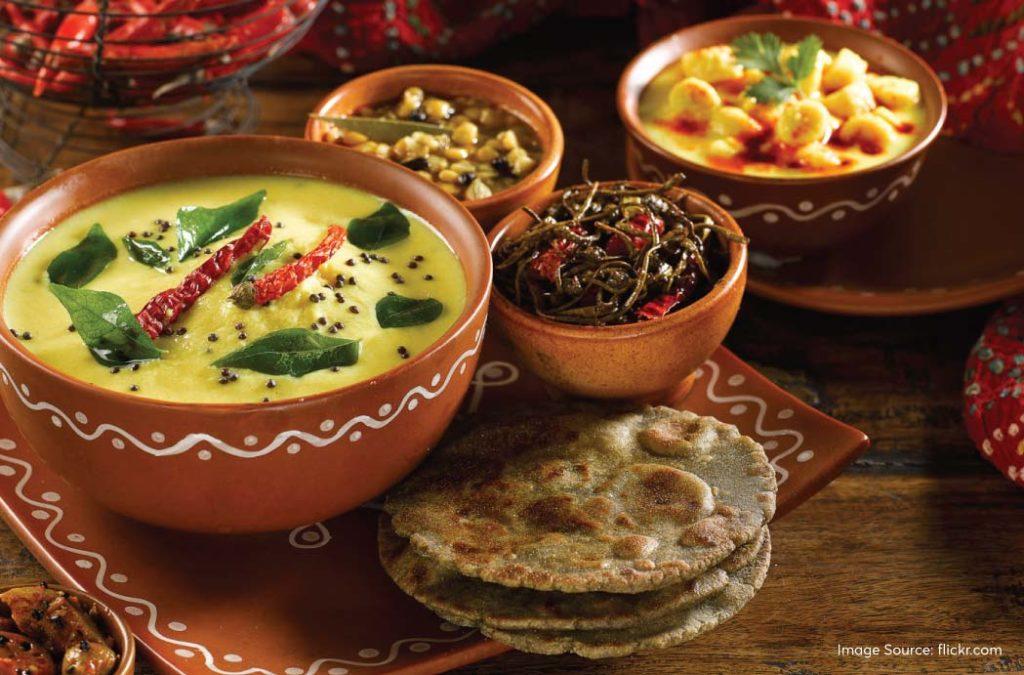
On the other hand, you can also dine at Padao Restaurant which offers panoramic views of the cityscape. Their Rajasthani Thali and Tandoori platter are very famous. Italian lovers can try their special pizza that has an interesting Indian touch to it.
Lesser known facts about Nahargarh Fort
- Nahargarh Fort served as the shooting location for several prominent Bollywood movies like Jodhaa Akbar, Rang De Basanti and Shuddh Desi Romance.
- Famous Bengali filmmaker, Satyajit Ray, also used the fort as a shooting spot for his 1971 movie, Sonar Kella.
- The fort is located at a height of 700 ft from the city level.
- It is believed to be one of the most haunted places in Rajasthan state.
- In 1857, during the Sepoy Mutiny, the British officer’s wife was made to stay in the Nahargarh Fort.
- No one is allowed near the Nahargarh Fort premises post sunset seeing how it is a part of Nahargarh Biological Park and there is a threat of wild animal attacks.
Nahargarh Fort: Best time to visit, entry & timings
You can visit Nahargarh Fort all year round and there is always something that will impress you. However, owing to the scorching heat during the summer seasons, we do not suggest you visit the place from March to mid-June. October to March is the ideal time to explore the fort when the temperature is suitable for day-long sightseeing and the greenery around the fort also stands out after the monsoon showers.
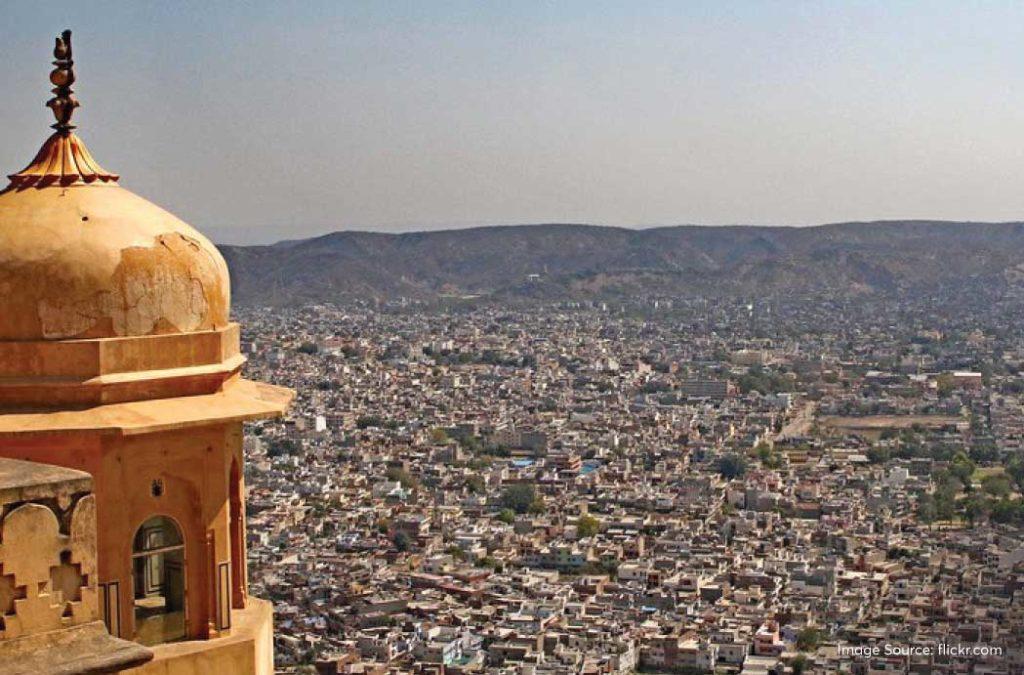
Nahargarh Fort is open from 10:00 AM to 5:30 PM every day. The entry fee is 50 INR for Indians, INR 25 for students and INR 200 for foreigners. Foreign students get a discount on the ticket price.
How to reach Nahargarh Fort?
By Air
You can reach Jaipur by taking a flight to Jaipur International Airport. From here, you will easily find taxis and auto-rickshaws that will help you cover the 25 kms to the Nahargarh Fort. When you exit the airport, you will also find buses that pass through the city centre and reach Nahargarh Fort.
By Rail
Jaipur Railway Station is about 19 kms away from the Nahargarh Fort. You will easily find auto-rickshaws outside the station and can reach the fort in roughly half an hour. Also, most of the buses and taxis that start from the railway station go by the same route.
By Road
To reach Nahargarh fort, people travelling with their own vehicles must take the Amer road from the city centre. The ones coming from other Indian cities must ultimately join NH48 which will lead them directly to Amer Road and then to the fort.
Nearby Attractions
Amer Fort
You must have seen the magnificence and regal charm of the Amer fort in the film – Jodhaa Akbar. Amer Fort stands on top of a hill and overlooks the Maota Lake.
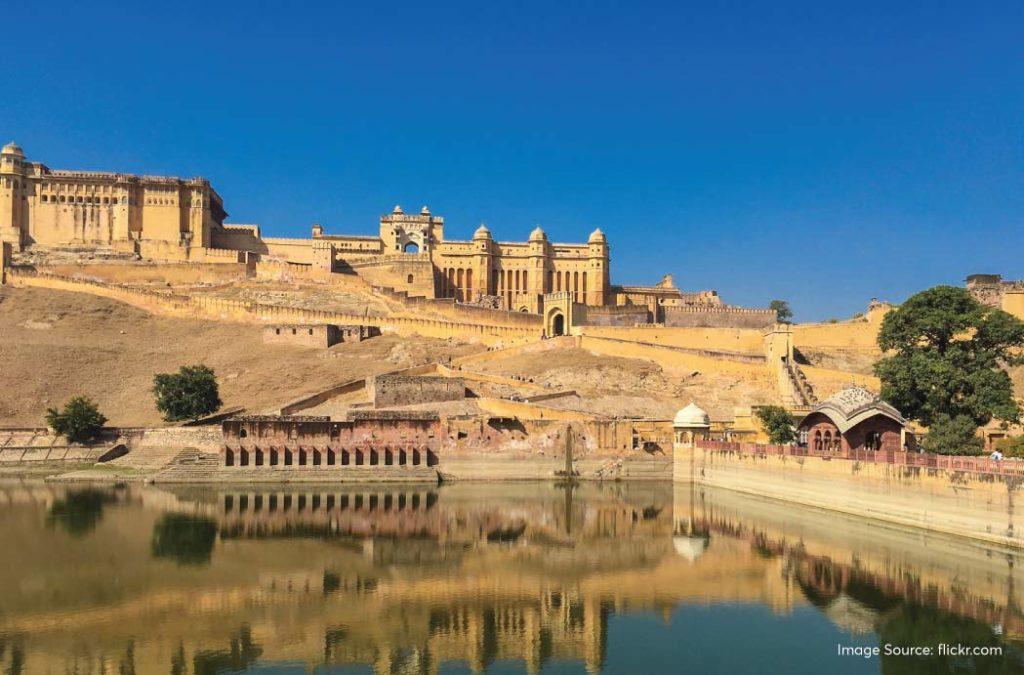
Though it is predominantly built in the Rajput architecture style, some palaces and courtyards were built following the Mughal architectural plan. It is definitely a treat to pay a visit to this splendid fortification.
Timings: 9:00 AM to 6:00 PM
Entry fee: INR 25 for Indians; INR 200 for foreigners
Jaigarh Fort
Jaigarh Fort is present on Cheel ka Teela or the Hill of Eagles in the Aravalli mountain range. It houses one of the world’s largest canon wheels – ‘Jaivana’. This fort overlooks the Amer Fort and was initially constructed to protect Amer Fort from any foreign invasions.
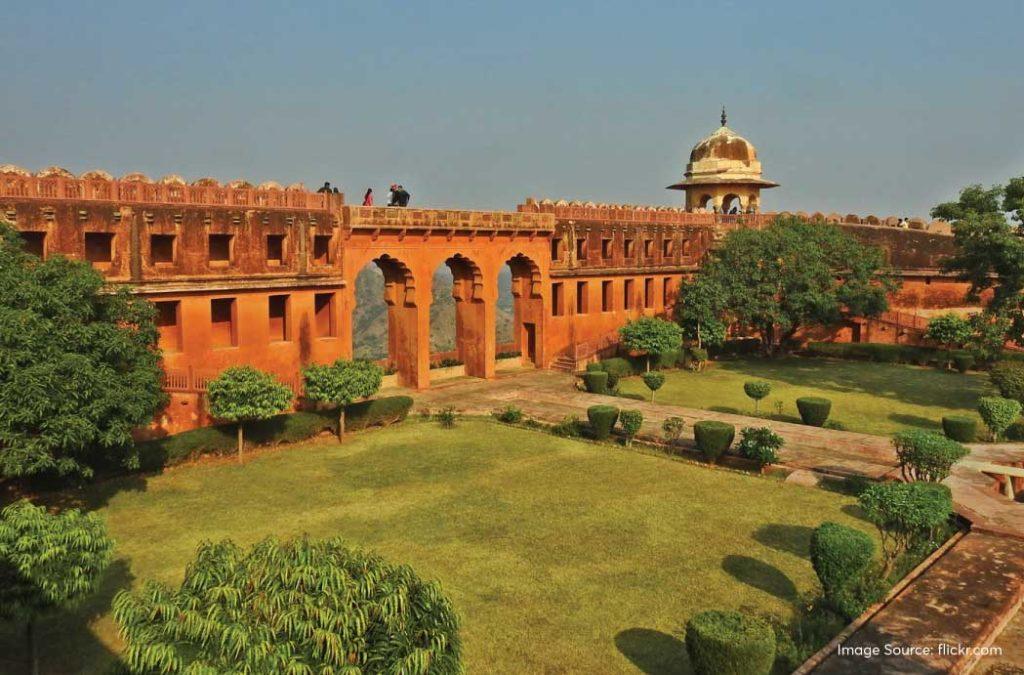
Amer, Jaigarh and Nahargarh forts were the main pillars of protection that kept the Rajputana Empire safe from security threats. Don’t forget to carry a bottle of water seeing how it might take you a while to explore this place.
Timings: 9:00 AM to 4:30 PM
Entry fee: INR 35 for Indians; INR 200 for foreigners
Jal Mahal
Jal Mahal is a fascinating palace that is a perfect blend of Rajputana and Mughal architecture styles and is surrounded by the Man Sagar Lake. It appears like the palace is almost floating on top of the water, giving it the name Jal Mahal or the Water Palace.
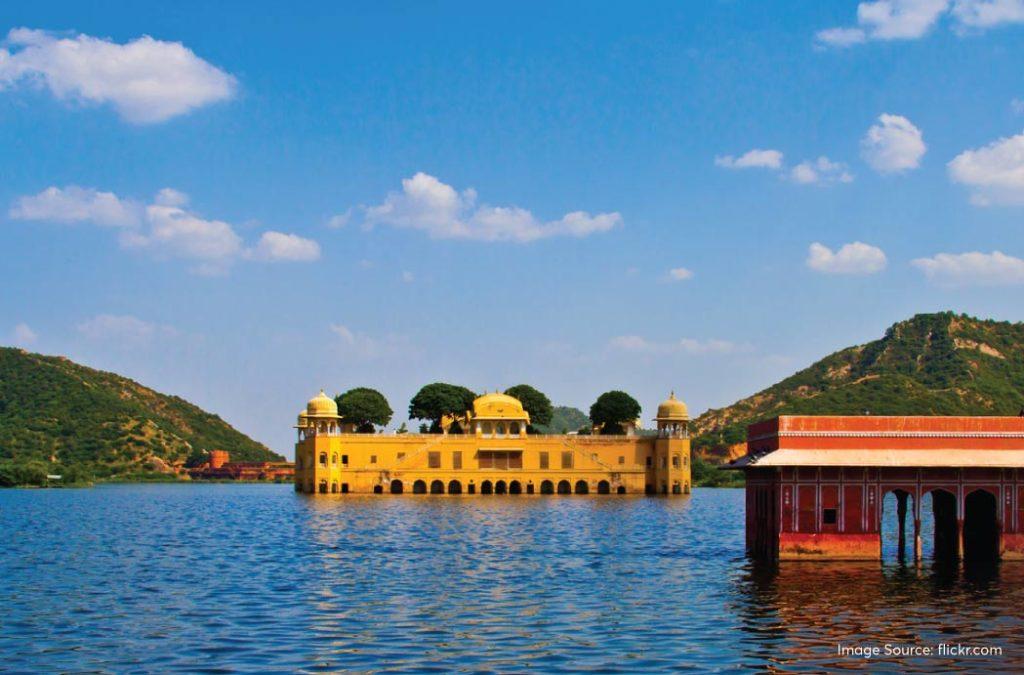
Though tourists cannot take a boat ride anymore to see the interiors of the palace, there is a dedicated space by the palace where you can take breathtaking pictures with the royal construction in the backdrop.
Timings: No specific timings
Entry fee: Free
Albert Museum
One of the oldest museums in Rajasthan, the Albert Hall Museum is known for having the most precious artefacts that give you a glimpse of ancient India.
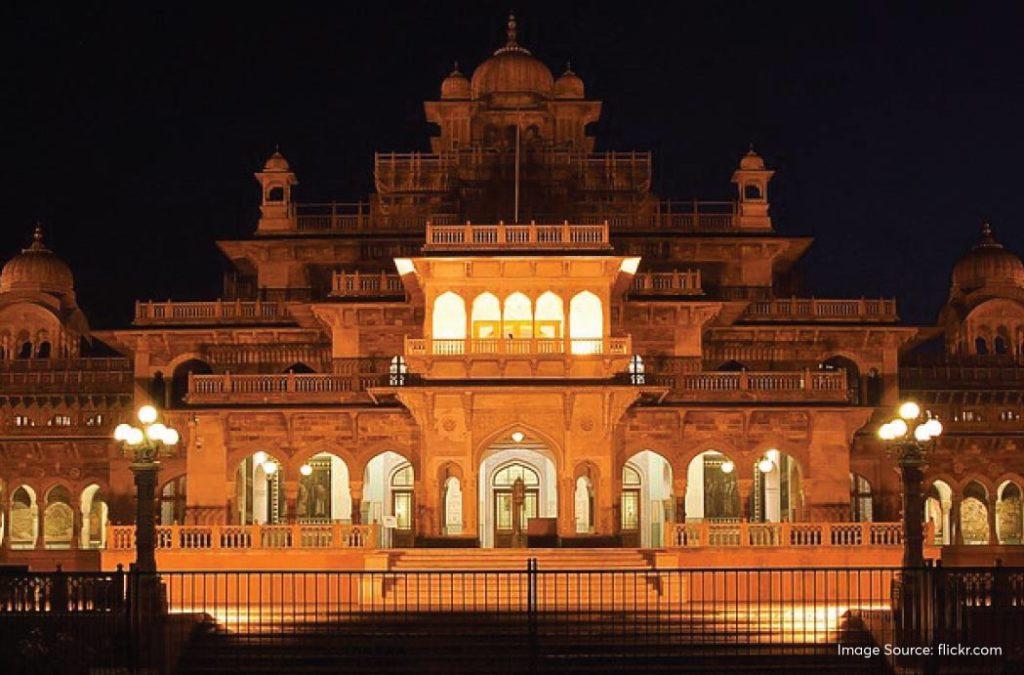
Here, you will find ancient jewellery, art pieces, sculptures, paintings, ivory tools, kitchen crockery, crystal works, carpets, weapons and fabrics. The main attraction is a real Egyptian mummy that rests in the centre of the museum.
Timings: 9:00 AM to 5:00 PM; 7:00 PM to 10:00 PM
Entry fee: INR 20 for Indians, INR 150 for foreigners
Hawa Mahal
Hawa Mahal is a beautiful palace which is present right next to the Sireh Deori Market in Jaipur. You can shop for blankets, quilts and also have mouth-watering food from the market and then head to see Hawa Mahal.
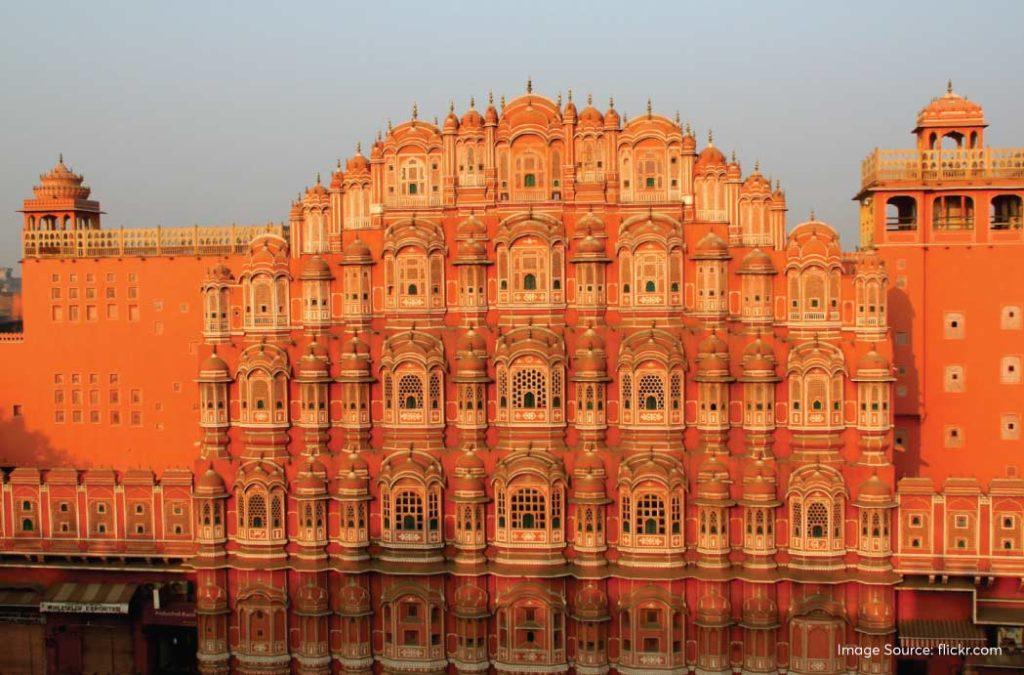
The palace is a pyramidal structure with five storeys and offers an impressive view of the city. It has about 953 small windows and the fresh breeze will always ruffle your hair when you gaze out of them.
Timings: 9:00 AM to 4:30 PM
Entry fee: INR 10 for Indians; INR 50 for foreigners
Finding hotels in Jaipur that are near Hawa Mahal will keep you close to all of the tourist places that we discussed so far. Also, you will be staying close to flea markets and local stores that sell impressive souvenirs.
Nahargarh Fort is one of the main tourist attractions in Jaipur city. Your Jaipur local tour itinerary is not complete if you do not add this splendid fortification to your must-visit list. With breathtaking surroundings and a calming atmosphere, the fort shows you how the Rajputana rulers lived and administered their kingdoms.
Let us know when you are planning to visit Nahargarh Fort in the comments section below!















